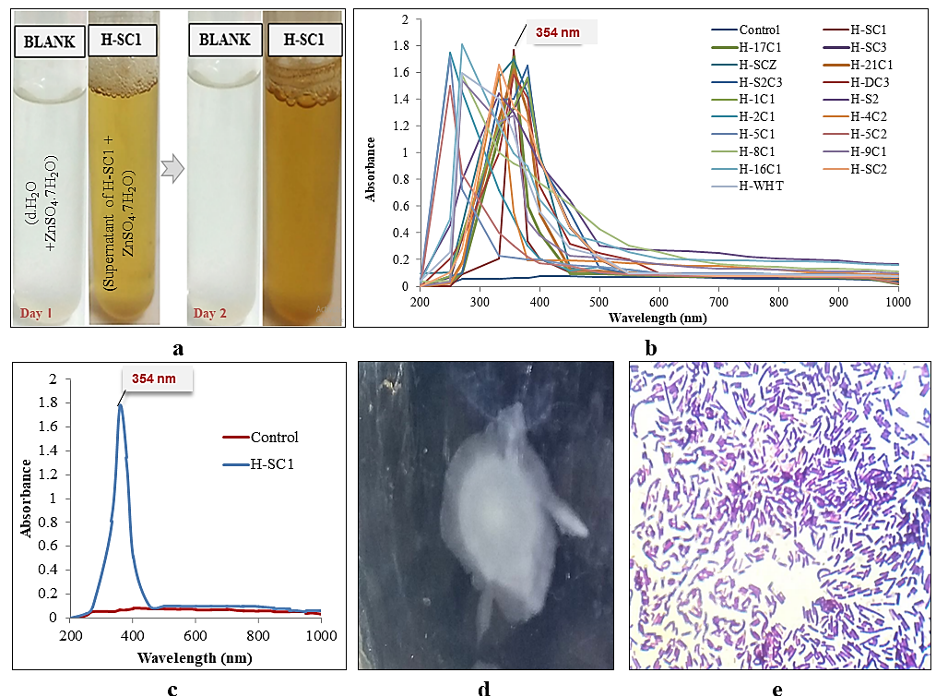 |
|
Zinc oxide nanoparticles ZnO NPs due to their unique properties have diverse applications in different fields of life. Bacterial synthesis of ZnO NPs is an eco-friendly, simple and inexpensive way. In this study, among eighteen bacterial isolates, eight confirmed ZnO NPs synthesis. On the basis of sharp absorption peak at 354 nm, growth conditions for gram positive Bacillus cereus H-SC1 were further optimized. Under different optimum parameters such as incubation temperature 37ºC, pH 9, inorganic salt (NH2)2SO4, SDS as surfactant, substrate (ZnSO4.7H2O) concentration 0.01 M and reaction time of two days under light condition, the ZnO NPs obtained had sharp peak at 352 nm and wide band gap of 3.5 eV. FTIR spectra indicated presence of amines and carbonyl groups as stabilizing agents. The scanning electron micrograph showed irregular shaped ZnO NPs and Zeta sizer indicated size ranging from 58.77-63.3 nm with PDI of 0.529. ZnO NPs exhibited negative zeta potential -7.39 mV. The antimicrobial assay by well diffusion method showed direct relationship of antibacterial activity with concentration of nanoparticles against Escherichia coli, Staphylococcus aureus and Salmonella typhi. Conclusively, bio-transformed ZnO NPs have great potential as an alternative to conventional antibiotics and as drug delivery tool.
Keywords: Zinc Oxide NPs, Bacillus cereus, SEM, FTIR, ZnO NPs antimicrobial activity
|
|
 |

